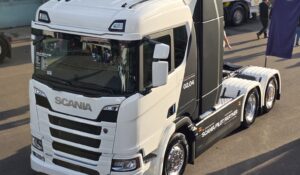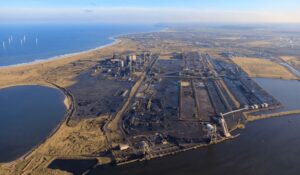Hydrogen WILL save classic cars – here’s how

If you’re a petrol head like me, you love a classic car. Whether it’s a newtimer fast Ford, a 60s E Type, a Burt Reynolds Bandit Trans-Am, or a roaring V12 Countach – whatever flavour takes your fancy, these iconic cars are the pinnacles of our culture.
They define eras, transcend time, and embody a bygone era’s freedom and rebellion. The smell of unburned petrol, the noise and theatre of the exhaust note, the way they try to kill you at every turn – these are the antidotes to reason, the epitome of irrationality, and a welcome escape from reality.
It speaks to the nine-year-old inside, and that’s why we love them – because they’re preposterous. But there is an elephant in the room. And that great charging elephant is a little globalist buzzword called Net Zero.
Soon, the bureaucrats in Brussels will have won their little game, but where does that leave people like you and me – and the tin, plastic, and rubber we all love?
Hydrogen will save classic cars
Fear not, there is a saviour. And no, it doesn’t come in a manger, but it is a baby molecule – the smallest one in fact – and the most abundant in the whole universe.
That molecule is hydrogen.
Hydrogen plays a crucial role in the innovative process of creating something called synthetic fuel.
How synthetic fuels can help preserve classic cars
Petrol, diesel, LPG, etc., are all dug out of the ground and made up of the rotten corpses of hundreds of thousands of year-old animals that walked and swam the earth.
You and I both drive around burning the remains of prehistoric fish, mostly. The crude oil is refined into our fuel of choice, but at its core, fossil fuels are what we call “hydrocarbons” – and depending on the type of fuel, they are made up of long or short ‘chains’ of hydrogen and carbon.
Synthetic fuels, or ‘e-fuels’, are crafted by combining hydrogen with carbon dioxide captured from the atmosphere. This magic process, known as the Fischer-Tropsch synthesis, creates hydrocarbons that perfectly mimic traditional petrol and diesel.
The beauty of this method is its compatibility with existing internal combustion engines, meaning our cherished classics can run on synthetic fuel without any modifications. How good is that?
The magic begins with hydrogen, produced through electrolysis, which involves using electricity to split water into hydrogen and oxygen. When powered by renewable energy sources like wind or solar, the resulting hydrogen is green.
For classic car enthusiasts, this is a game-changer. The burble of a V8, the tactile thrill of a manual gearbox, and the joy of a Sunday drive can continue well into the future without compromising environmental responsibility.
Synthetic fuels can even be tailored to specific engine requirements, ensuring these vintage machines’ optimal performance and longevity.
Best of all, if these synthetic fuels made with green hydrogen, they are carbon-neutral, as we are taking existing carbon dioxide out of the atmosphere and not creating any new carbon, making it a very green process.
No new cars need to be created, which causes more global warming, and I get to drive my 3.5-litre V8 Defender around. How wonderful is that?
YOU MAY ALSO LIKE: Top 10 hydrogen prototype cars in 2024: Hyperion XP-1, BMW iX5 Hydrogen and more










